20 years in Russia. Report from Skolkovo
Last Wednesday, Intel celebrated 20 years of its existence in Russia. Celebrations were held in the business school "Skolkovo", where all the partners and friends of the company came to congratulate on the anniversary.

For those who could not attend the event, we provide a detailed report.
')

The guests at Skolkovo began to arrive from early morning.
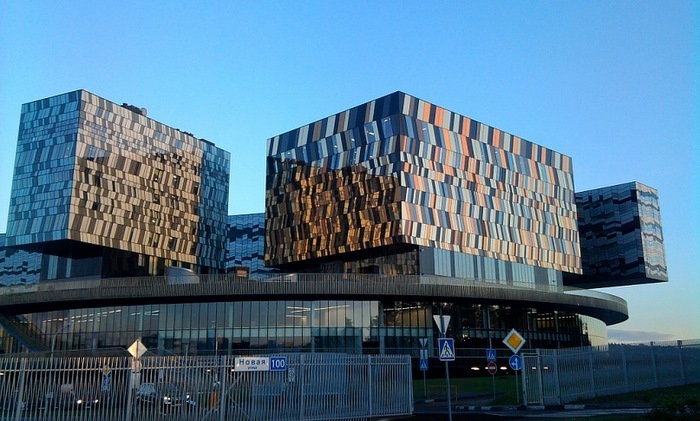
The festive ceremony began at 11-00, but from the very morning in the hall stood the stands of Intel partner companies, which showed the latest news. Here, for example, a prototype car computer IVI based on MeeGo.
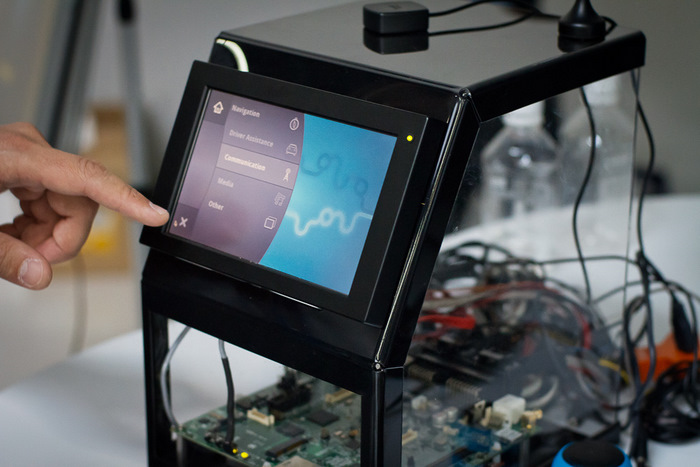
Intel employees went to an improvised exhibition and they could ask any questions.
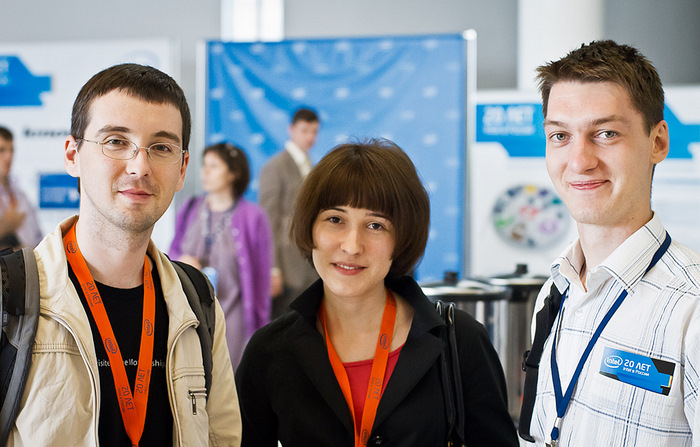
Separately, the stand was Intel Health, which demonstrated all the latest technologies in medicine, which were implemented with the help of Intel.

A pretty nurse could even demonstrate the technique in practice. After all, no wonder there was a model of man.

3Q introduced several laptops and fresh tablets.

Depo Computers showed their new computers based on Intel processors.
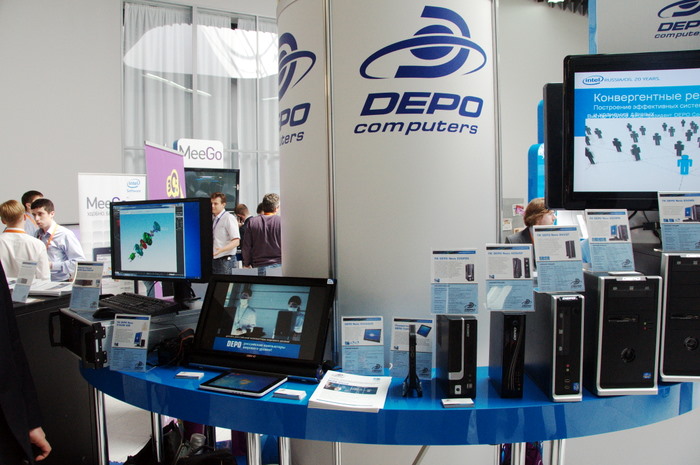
Lenovo representatives pleased with the Ultrabook, which is only 14.1 mm thick. The company predicts that this laptop will soon force all competitors out of the market. Well, this is quite plausible, considering that despite its small size, this ultrabook has great features.
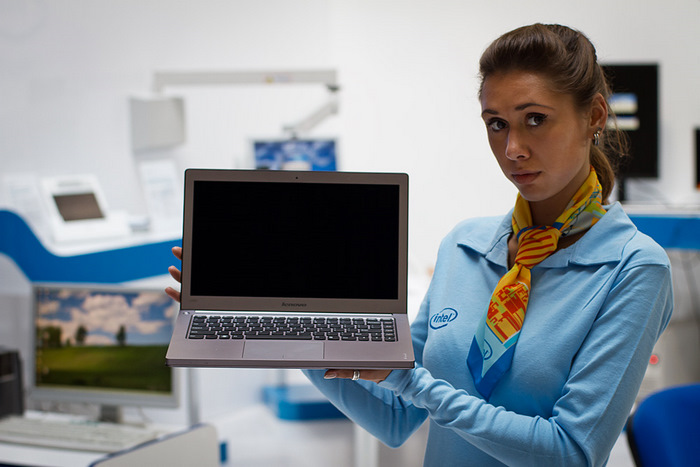
In size it is like a tablet. Very thin, really interesting device.
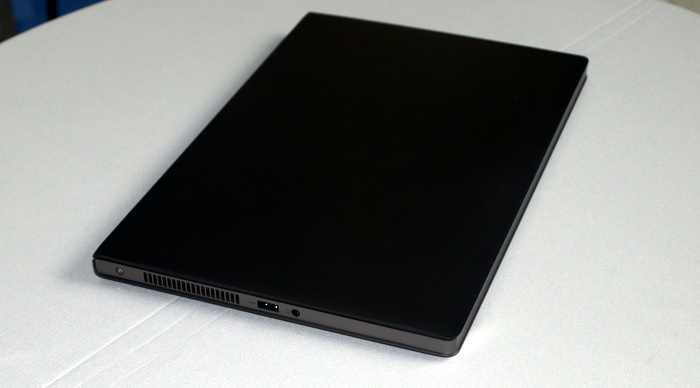
In general, Lenovo had a very interesting booth. What was just there, in addition to laptops. These are dumbbells, glasses, books and toys. So I wanted to go and play.

In the lobby were put up a few candy bars, which could get information about Intel.
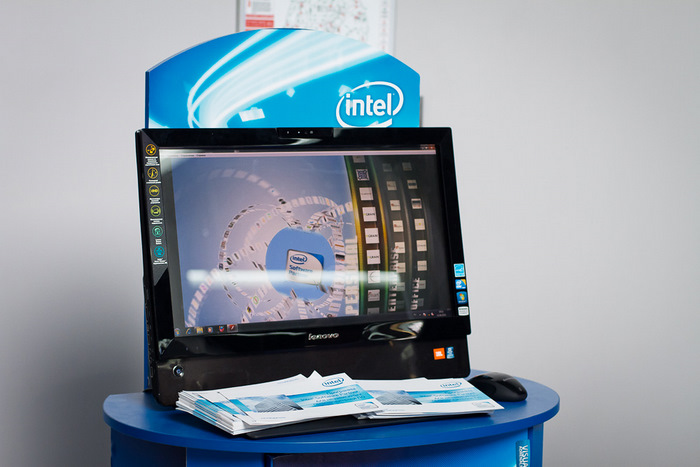
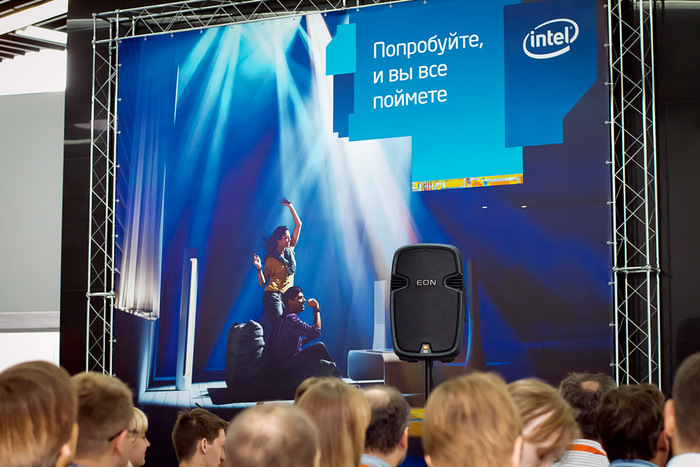
The official part was led by Kamil Isaev, director of research and development (SSG) in Russia and the CIS. He focused the guests on the achievements of Russian colleagues in the development of the corporation in the field of research and development.
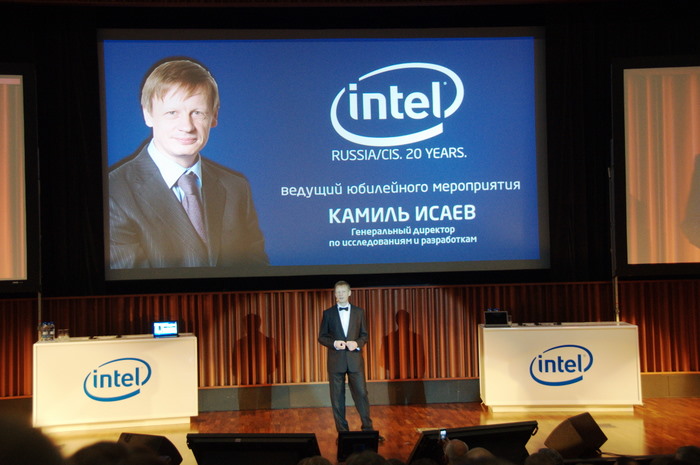
After that, he introduced Dmitry Konash, regional director of Intel in the CIS countries. Dmitry spoke about the history of Intel in Russia, starting with the first office of the corporation, opened in the building of the Moscow Vocational School in 1991.

He also spoke about the first Intel customers in Russia.

Today, Intel in our country is not only the largest research and development center in Europe, located in the offices of Moscow, St. Petersburg, Nizhny Novgorod, Novosibirsk, with sales and marketing offices in Kiev and Almaty. The corporation has become an integral part of the IT industry and economy, an active participant in social processes in these countries, and a respected employer.
After Dmitry Konash, William Savage (Bill Savage), vice president of Intel Software and Services Group (SSG), took the stage. He focused on the structure of Intel's development centers in Russia. He stressed that they represent different groups: software and services (SSG), architectures (Intel Architecture Group, IA), technologies and production (TMG), research laboratories (Intel Labs). The main themes of the development are the creation of compilers, computational libraries and tools for creating programs (Intel Parallel Studio, Intel Cluster Tools, Media SDK and MeeGo SDK), new microarchitectures.
Thomas Kilroy, senior vice president of Intel and general manager of the marketing and sales group, noted that technology is everywhere around the world. People are increasingly communicating in social networks, using e-mail, create and share content. Intel continues to implement Moore's law, making processors more and more efficient and energy efficient. Mr. Kilroy paid particular attention to Russia as one of the global leaders in the IT field. The volume of investments in Russia and other CIS countries, according to forecasts, in 2010-2014 will show the largest percentage increase among all European markets. Thomas also demonstrated the ultrabook, which Intel has already shown at Computex-2011.

Kirk Skaugen, vice president and general manager of the Intel Architecture Group, dedicated his presentation to Intel’s strategic vision for cloud computing and introduced the next generation standards and technologies that will make data centers safer, more efficient, easier. He also showed the Tick-Tock model, which is the model by which micro-architectures and processors are created at Intel.

In his speech, Steve Pawlowski, Senior Honored Research Engineer of the Intel Architecture Group, general manager of Cross-IAG Architecture and Pathfinding, presented the trends and achievements required for data processing, software, wireless networks and security, which can all improve the work of mobile computers to, on the one hand, make our lives easier, and on the other - to solve not only the main tasks of users, but also the global problems of humanity.
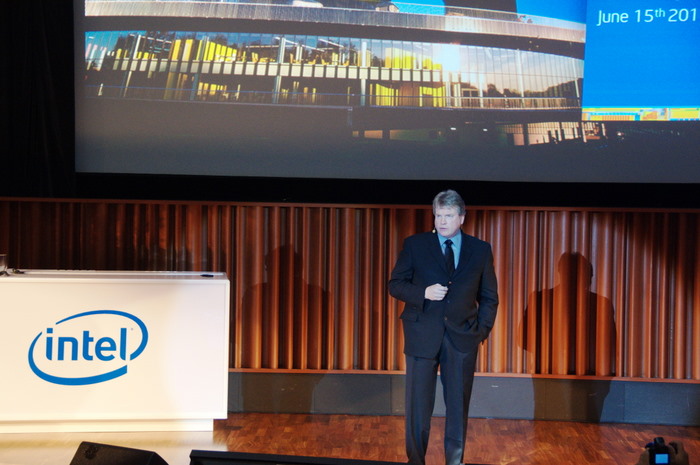
After the main reports, technical sessions were held:
Read more about the sessions here .
Meeting Steve Pavlovski with reporters in Africa, where they asked him their questions in the press center.
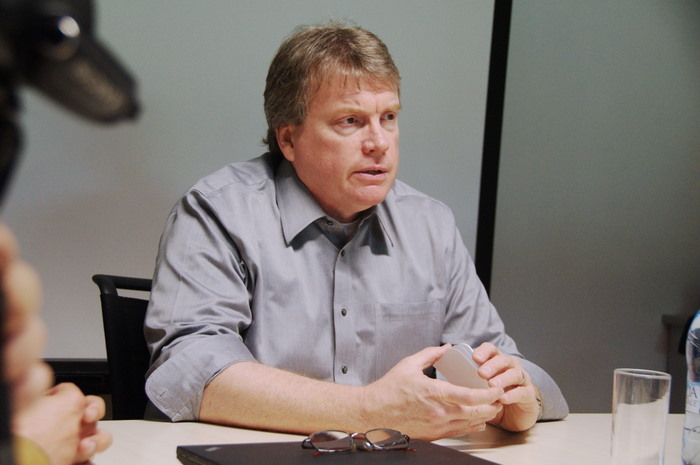
Some official facts about the company:
Related Links:
 Event program
Event program
 Key Reports
Key Reports
 useful links
useful links
 Intel Twitter in Russia
Intel Twitter in Russia
Bonus
At the beginning of the presentation, several interesting and funny Intel commercials were shown on the screen. We present them to you. Unfortunately, they are not in Russian yet.
The remaining videos:
 Cake
Cake
 Intel chase
Intel chase
 Ballet
Ballet
 Colleagues
Colleagues
 Promotions
Promotions
20 years in Russia is a milestone even for such a large corporation as Intel.
See you on the 30th anniversary. Good luck!

For those who could not attend the event, we provide a detailed report.
')

The guests at Skolkovo began to arrive from early morning.

The festive ceremony began at 11-00, but from the very morning in the hall stood the stands of Intel partner companies, which showed the latest news. Here, for example, a prototype car computer IVI based on MeeGo.

Intel employees went to an improvised exhibition and they could ask any questions.

Separately, the stand was Intel Health, which demonstrated all the latest technologies in medicine, which were implemented with the help of Intel.

A pretty nurse could even demonstrate the technique in practice. After all, no wonder there was a model of man.

3Q introduced several laptops and fresh tablets.

Depo Computers showed their new computers based on Intel processors.

Lenovo representatives pleased with the Ultrabook, which is only 14.1 mm thick. The company predicts that this laptop will soon force all competitors out of the market. Well, this is quite plausible, considering that despite its small size, this ultrabook has great features.

In size it is like a tablet. Very thin, really interesting device.

In general, Lenovo had a very interesting booth. What was just there, in addition to laptops. These are dumbbells, glasses, books and toys. So I wanted to go and play.

In the lobby were put up a few candy bars, which could get information about Intel.


The official part was led by Kamil Isaev, director of research and development (SSG) in Russia and the CIS. He focused the guests on the achievements of Russian colleagues in the development of the corporation in the field of research and development.

After that, he introduced Dmitry Konash, regional director of Intel in the CIS countries. Dmitry spoke about the history of Intel in Russia, starting with the first office of the corporation, opened in the building of the Moscow Vocational School in 1991.

He also spoke about the first Intel customers in Russia.

Today, Intel in our country is not only the largest research and development center in Europe, located in the offices of Moscow, St. Petersburg, Nizhny Novgorod, Novosibirsk, with sales and marketing offices in Kiev and Almaty. The corporation has become an integral part of the IT industry and economy, an active participant in social processes in these countries, and a respected employer.
After Dmitry Konash, William Savage (Bill Savage), vice president of Intel Software and Services Group (SSG), took the stage. He focused on the structure of Intel's development centers in Russia. He stressed that they represent different groups: software and services (SSG), architectures (Intel Architecture Group, IA), technologies and production (TMG), research laboratories (Intel Labs). The main themes of the development are the creation of compilers, computational libraries and tools for creating programs (Intel Parallel Studio, Intel Cluster Tools, Media SDK and MeeGo SDK), new microarchitectures.
Thomas Kilroy, senior vice president of Intel and general manager of the marketing and sales group, noted that technology is everywhere around the world. People are increasingly communicating in social networks, using e-mail, create and share content. Intel continues to implement Moore's law, making processors more and more efficient and energy efficient. Mr. Kilroy paid particular attention to Russia as one of the global leaders in the IT field. The volume of investments in Russia and other CIS countries, according to forecasts, in 2010-2014 will show the largest percentage increase among all European markets. Thomas also demonstrated the ultrabook, which Intel has already shown at Computex-2011.

Kirk Skaugen, vice president and general manager of the Intel Architecture Group, dedicated his presentation to Intel’s strategic vision for cloud computing and introduced the next generation standards and technologies that will make data centers safer, more efficient, easier. He also showed the Tick-Tock model, which is the model by which micro-architectures and processors are created at Intel.

In his speech, Steve Pawlowski, Senior Honored Research Engineer of the Intel Architecture Group, general manager of Cross-IAG Architecture and Pathfinding, presented the trends and achievements required for data processing, software, wireless networks and security, which can all improve the work of mobile computers to, on the one hand, make our lives easier, and on the other - to solve not only the main tasks of users, but also the global problems of humanity.

After the main reports, technical sessions were held:
- Datacenters, high performance and cloud computing.
- IT in the enterprise.
- Intel solutions for mobile platforms.
- Software and computing platforms.
Read more about the sessions here .
Meeting Steve Pavlovski with reporters in Africa, where they asked him their questions in the press center.

Some official facts about the company:
Who: Since 1972 in the EMEA region, Intel has been providing 16,000 jobs for people in the high-tech industry. The centers are open in 57 cities located in 35 countries, including a network of 30 research centers with more than 6,000 employees. The CEO of Operations in the EMEA region is Christian Morales, vice president of the Intel Sales and Marketing Group. Intel's headquarters in this region is divided between Munich (Germany) and Swindon (United Kingdom).
Intel EMEA plays an important role in Intel's global operations in the world market, whose president and CEO is Paul Otellini. Intel Headquarters is located in Santa Clara (California). The staff of the corporation is about 93,500 people. The structure of the corporation includes more than 500 offices and enterprises in 58 countries and 213 cities. In 2010, revenues from Intel, the largest semiconductor supplier in the world, reached $ 43.6 billion, an increase of 24% over the previous year. In the first quarter of 2011, Intel continued to record high growth rates: compared to the same period in 2010, revenues increased by 25% (to $ 12.9 billion).
Where: The volume of Intel's manufacturing investment in the EMEA region is € 10.7 billion ($ 14.5 billion), the corporation spent $ 25 billion under contracts concluded with suppliers in the EMEA region in 2010. Intel's activities in the EMEA region covered European Union countries (offices were opened in Austria, Belgium, the Czech Republic, Denmark; Finland, France, Germany, Greece, Hungary, Ireland, Italy, Lithuania, the Netherlands, Poland, Portugal, Romania, Spain, Sweden and the United Kingdom), the countries of Greater Europe (Israel, Kazakhstan, Russia, Serbia, Switzerland, Turkey and Ukraine ), as well as countries in Africa and the Middle East (Algeria, Egypt, Kenya, Lebanon, Morocco, Nigeria, Saudi Arabia, South Africa and the United Arab Emirates).
What: Currently, buyers in the EMEA region acquire more computers than in any other region of the world. This region with a large variety of cultures is distinguished by an innovative approach to economic development and great growth potential. The high demand for computing systems reflects not only the great need for their presence in developing countries, but also the great potential of small and medium businesses, as well as the presence of a large number of technology companies leading in many areas, from car production to cloud services.
Related Links:
 Event program
Event program Key Reports
Key Reports useful links
useful links Intel Twitter in Russia
Intel Twitter in RussiaBonus
At the beginning of the presentation, several interesting and funny Intel commercials were shown on the screen. We present them to you. Unfortunately, they are not in Russian yet.
The remaining videos:
 Cake
Cake Intel chase
Intel chase Ballet
Ballet Colleagues
Colleagues Promotions
Promotions20 years in Russia is a milestone even for such a large corporation as Intel.
See you on the 30th anniversary. Good luck!
Source: https://habr.com/ru/post/122199/
All Articles